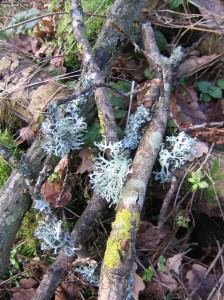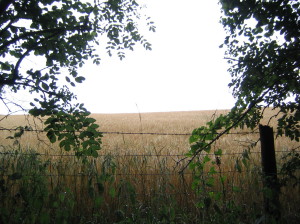 |
Top - Lichens blown down from the trees in autumn |
What is the woodland community?
Woodlands consist of much more than trees. They are rich, diverse, complex communities, in which every part interlocks for the benefit of the whole. They are not a mono-culture like a crop of wheat or corn. This makes the woodland ecosystem distinctive.
* The woodland community consists of- fauna- animals, birds, insects, etc; flora- flowering plants, ferns, fungi, etc, as well as the trees; and most importantly the geography- soil, climate, water, air, history, etc. The mix is very different for each woodland making every one unique.
* In the natural forest this community is exceptionally rich and diverse, vibrant, complex and self-regulating. Each individual interacts with its community and is thus constantly evolving. Dominant individuals respond to their surroundings and develop new traits and evolve. The weak die out. These checks and balances are essential in maintaining a forest that is a healthy, self-sustaining and self-regulating ecosystem.
* This complex system has evolved over millennia, evidenced for example by the ferns, bryophytes, lichens and myriad of insects, relicts of former ecosystems but surviving in the forest.
Our intervention for centuries has disregarded this complex community. We have become very focussed; on the one hand trees grown as a crop, and on the other more recently conserving species specific habitats for- eg dormice, butterflies or a particular flower which we wish to protect above all else. Such intervention does not support a self-sustaining woodland ecosystem and can only be maintained by our continuing intervention. On the contrary, a healthy ecosystem contains the appropriate self-sustaining habitats.
|





